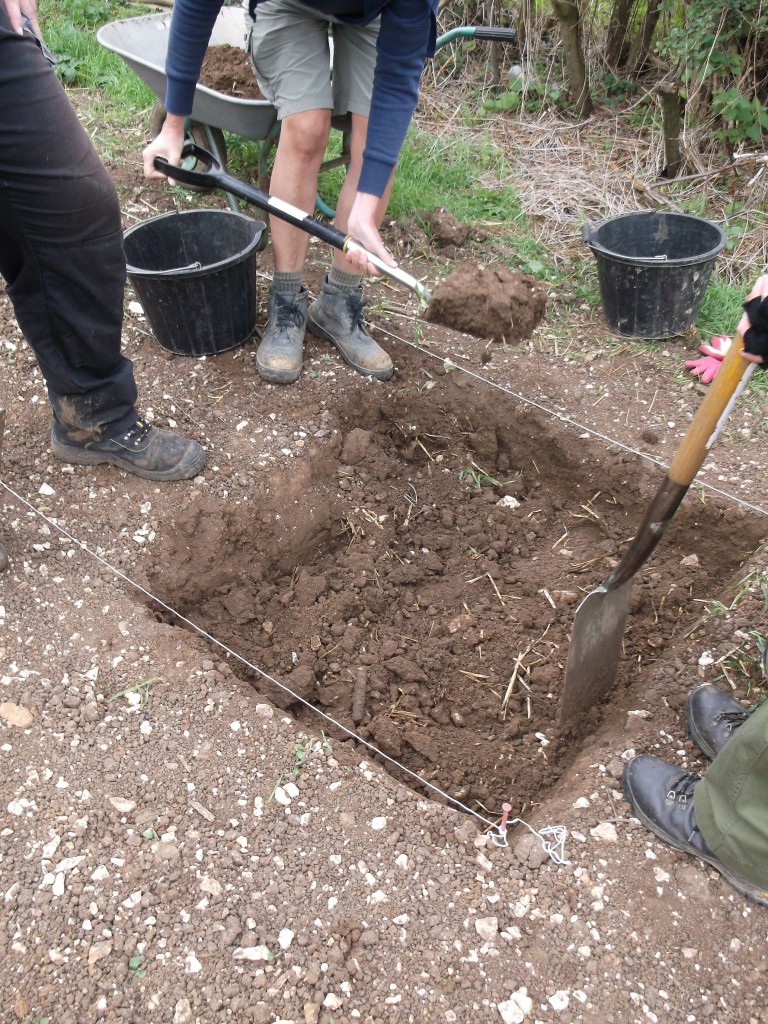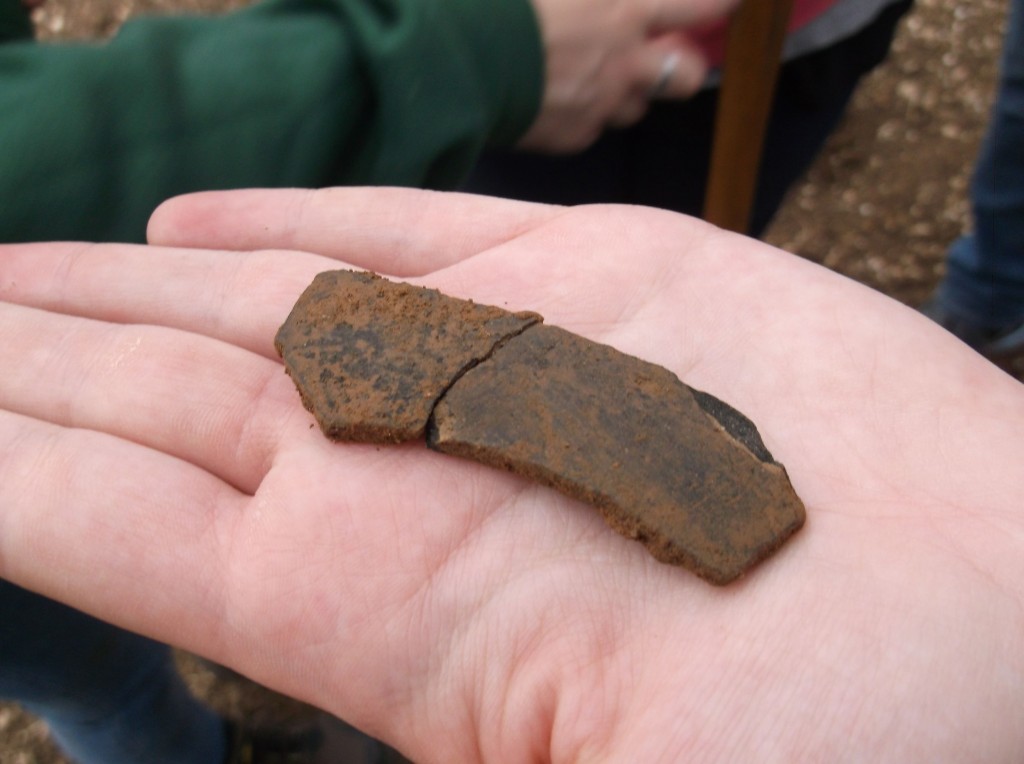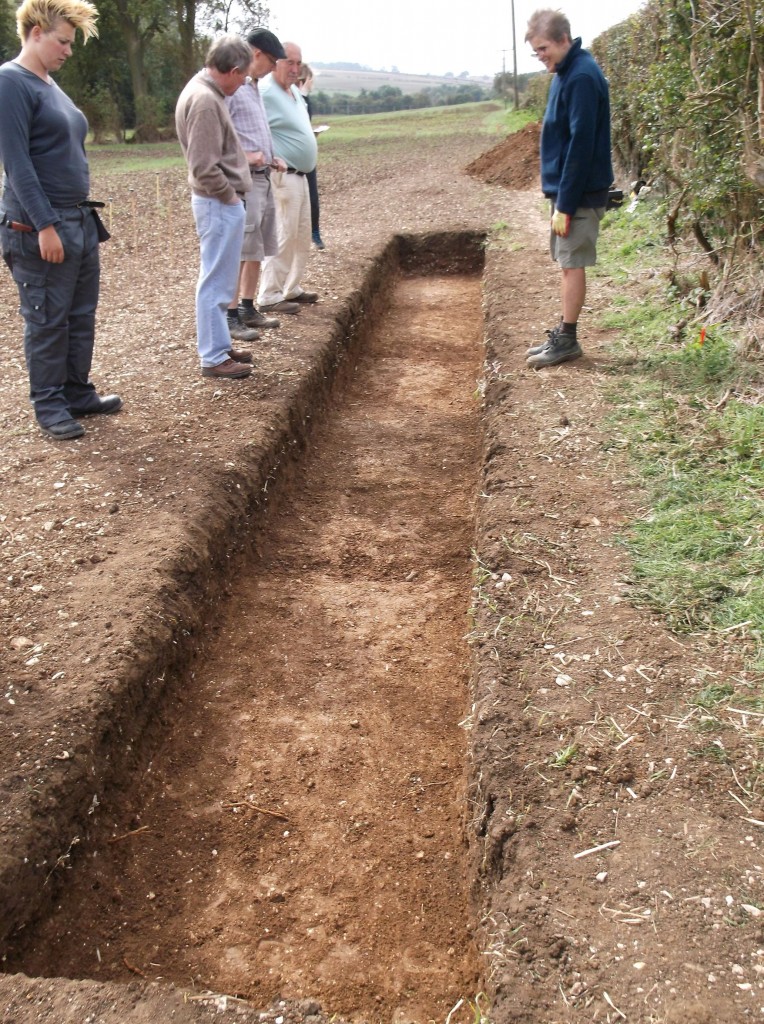Feed URL: https://blogs.kent.ac.uk/digthewolds/2014/09/14/140914-getting-stuck-in/feed/?withoutcomments=1
Hello, weekend, and hello, digging! After having pieced together our impressive geophys results, including the magnetometry done later on part of the site to complement our fieldwalking, we were granted permission to open a trench in that part of the field. Mapping out the area using our geophysical survey essentially decided whether we would be allowed to investigate below the ploughsoil!
Previous knowledge of human activity in the area was based off of local surveys done on other similar sites by the University, and familiarity with the geology of the Lincolnshire wolds, but as there were no visible indications of features on the surface (such as crop markings that are visible in aerial photography), anything below the ploughsoil was a mystery to the landowners and to us. The site has a tremendous amount of potential for excavation as it is indicated that it is very well-preserved – we had earlier hoped to come across the foundations of a villa, and as we relied more on the clearer magnetometry results, other long, linear features came to light.
The importance of geophysical surveying and the value of archaeological technology really prove themselves as this week’s survey has in fact revealed what is clearly a very extensive settlement, from those line-like features mentioned. Factoring in the surface finds, which have been gathered through our methodical fieldwalking, we can see that this was a long-lived settlement through the Roman era with indications of wealth – generally the great volumes of roof tile and boxflue – presumably generated through agriculture, reflected in the successful cultivation of the land in recent times. Our team are interpreting some of the longer and larger features as possible roads running along the field but not parallel to the hedgerows, as well as some ditches closer to a water source.
Current plans for an evaluation trench are for 10 metres in length, a long narrow trench. The trench has been marked out so as to coincide with one of the linear features identified by magnetometry that we imagine to be a ditch. This is a positive development as it allows us to have a wider view than the proposed smaller test pits mentioned previously.
And on Saturday, we finally began, with a 1 by 5 metre trench. Even though many student volunteers are still learning to handle spades and shovels and adhere to the current spoil management strategy, a longer 1 by 10 metre trench was mostly dug by Sunday. We have been extremely fortunate with our weather recently – but the newcomers weren’t expecting the earth beneath the ploughsoil to be quite so tough, due to its density and moisture content. Roots and large pieces of flint were the main obstacles, but luckily, a handful of intriguing finds made the sweat all worth it. Have a look at these items found in one context of the ploughsoil!
We made good progress over a few days – neat as it is, we have gotten off to a good start. We’ll come back to this trench after our work on a different site at the beginning of the week!




